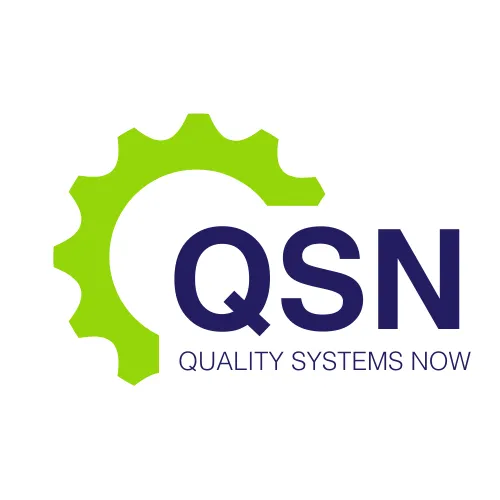LATEST NEWS

Setting Industry Standards: How Advancing Your Metrics Elevates Your Organisation
The Power of Metrics in Shaping Industry Leadership
In highly regulated industries—such as pharmaceuticals, medical devices, and biotechnology—metrics are more than just performance indicators; they are the foundation of operational excellence, regulatory compliance, and competitive advantage. While many organisations focus on meeting baseline compliance requirements, true industry leaders go further by redefining what "good" looks like through advanced, scientifically rigorous metrics.
This article explores how organisations can set new industry benchmarks by evolving their Key Performance Indicators (KPIs) beyond conventional compliance measures. We will examine:
Why most companies settle for outdated metrics (and how this limits progress)
The role of advanced metrics in regulatory leadership (TGA, FDA, EMA expectations)
A step-by-step framework for transitioning from basic to breakthrough KPIs
Case studies of companies that have redefined industry standards
By the end, you will have a proven roadmap for transforming your quality metrics from a passive reporting tool into a strategic driver of industry leadership.
1. The Compliance Trap: Why Most Companies Measure the Wrong Things
a) The Illusion of Safety in Traditional Metrics
Many organisations rely on generic, compliance-driven KPIs, such as:
"Number of audits completed" (without depth of findings)
"Training completion rates" (without competency validation)
"On-time CAPA closures" (without verifying long-term effectiveness)
These metrics create a false sense of security, masking deeper systemic issues.
Example: A medical device manufacturer may report "zero major FDA observations" for years—only to face a sudden regulatory crisis due to undetected process drift.
b) The Fear of Change
Why do companies stick to outdated metrics?
Regulatory comfort zone: "If it’s not broken, why fix it?"
Short-term focus: Leadership prioritises immediate compliance over long-term maturity.
Data paralysis: Organisations collect metrics but lack the analytical tools to extract insights.
c) The Cost of Mediocre Metrics
Missed opportunities for innovation
Increased risk of undetected quality failures
Lost competitive edge as rivals adopt smarter measurement systems
2. How Advanced Metrics Position You as an Industry Leader
a) Regulatory Bodies Reward Maturity, Not Just Compliance
The FDA’s Quality Management Maturity (QMM) program incentivises companies that go beyond minimum standards.
The TGA’s emphasis on PIC/S GMP encourages predictive quality metrics over reactive ones.
ISO 13485:2016 explicitly requires risk-based decision-making, which demands better data.
b) The Competitive Advantage of Smarter KPIs
Companies that pioneer advanced metrics:
✔ Attract top talent (professionals prefer working with innovators)
✔ Win more tenders (procurement teams favour suppliers with demonstrable quality maturity)
✔ Reduce costly deviations (predictive metrics catch issues before they escalate)
c) Case Study: How One Pharma Company Redefined Industry Benchmarks
A mid-sized Australian pharmaceutical firm shifted from "number of deviations" to "deviation prediction accuracy" using machine learning.
Results:
40% reduction in critical deviations within 18 months
Recognised by the TGA as a "Maturity Leader" in 2023
Competitors adopted their KPI framework within two years
3. A Step-by-Step Framework for Advancing Your Metrics
Step 1: Audit Your Current KPIs
Which metrics are vanity indicators? (e.g., "100% training compliance")
Which ones actually drive improvement? (e.g., "First Pass Yield")
What data are you not collecting that could provide deeper insights?
Step 2: Align Metrics with Strategic Goals
Business GoalBasic KPIAdvanced KPIReduce deviationsDeviation countDeviation severity index + recurrence rateImprove trainingCompletion %Post-training competency assessmentsEnhance auditsAudit closures% of findings leading to systemic fixes
Step 3: Integrate Predictive Analytics
Statistical Process Control (SPC) charts to detect trends before failures occur
AI-driven anomaly detection in manufacturing data
Risk-based scoring models for supplier quality
Step 4: Foster a Data-Driven Culture
Train teams on data literacy (interpreting control charts, regression analysis)
Incentivise proactive metric improvement (not just hitting targets)
Public dashboards to promote transparency
Step 5: Benchmark Against (and Beyond) Industry Standards
Compare your metrics not just to competitors, but to cross-industry leaders (e.g., aerospace, automotive)
Publish whitepapers on your innovations to establish thought leadership
4. The Future of Metrics: Where Industry Standards Are Heading
a) Real-Time Quality Monitoring
IoT-enabled manufacturing with live deviation alerts
Automated regulatory reporting (e.g., FDA eSubmitter integrations)
b) AI-Optimised KPIs
Machine learning recommending which metrics matter most for your specific operations
Dynamic KPI adjustment based on real-world performance
c) Global Standardisation of Advanced Metrics
ICH Q12 paving the way for more adaptive regulatory metrics
ISPE’s "Pharma 4.0" pushing for digitalised quality systems
Conclusion: Don’t Follow Standards—Set Them
The difference between industry followers and industry leaders lies in how they measure success. Companies that cling to outdated KPIs risk obsolescence, while those that pioneer smarter, predictive, and behaviour-driving metrics shape the future of their sectors.
Your Action Plan:
Conduct a KPI audit this quarter.
Pilot one advanced metric (e.g., CAPA effectiveness rate).
Engage regulators early—TGA/FDA appreciate proactive quality innovation.
Share your successes to elevate the entire industry.
By advancing your metrics, you don’t just improve your organisation—you redefine excellence for everyone else.
